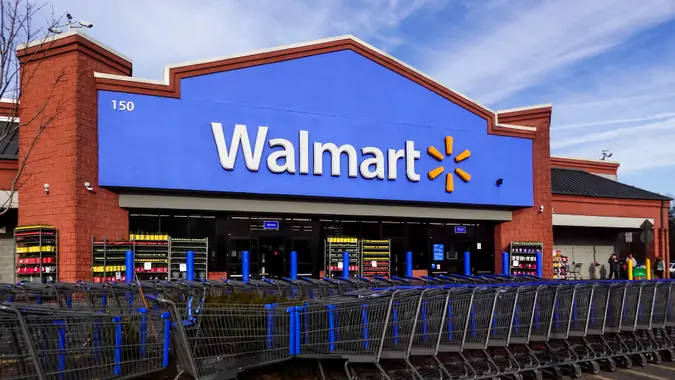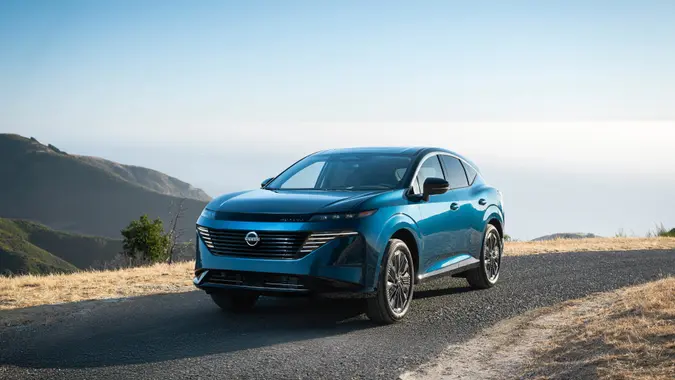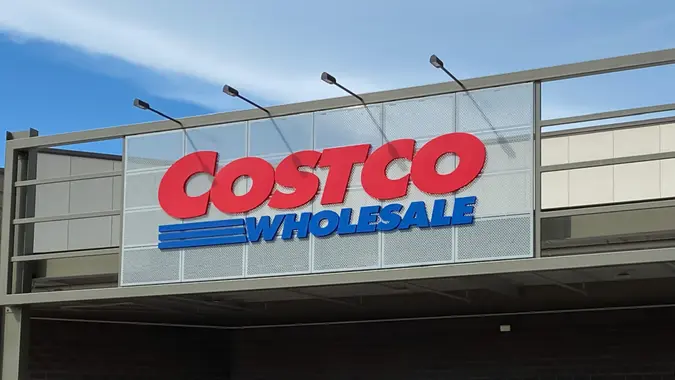What $1,000 in Groceries Bought in 2020 vs. What It Buys Today

Commitment to Our Readers
GOBankingRates' editorial team is committed to bringing you unbiased reviews and information. We use data-driven methodologies to evaluate financial products and services - our reviews and ratings are not influenced by advertisers. You can read more about our editorial guidelines and our products and services review methodology.

20 Years
Helping You Live Richer

Reviewed
by Experts

Trusted by
Millions of Readers
If it feels like your grocery cart is emptier these days even though you’re spending more, you’re not imagining things. There’s been a lot of talk about inflation lately, and nowhere is it more obvious than at the grocery store.
Prices have been climbing steadily for years, but by how much exactly? Between 2020 and 2024, the Consumer Price Index (CPI) for all food items in the U.S. increased by 23.6%. That’s even higher than the CPI for all items across the broader economy, which rose 21.2% over the same period.
To get a clearer picture, let’s look at what $1,000 in groceries bought back in 2020 compared to what the same amount gets you in 2025. Also find out the most amount of money you should be spending on groceries.
How Far $1,000 Went in 2020
In 2020, $1,000 could really stretch at the supermarket. According to the Bureau of Labor Statistics’ CPI calculator, $1,000 then is equal to about $1,251.57 today. That means your 2020 grocery budget had about almost one-third more buying power compared to now.
To put that into perspective, a gallon of milk averaged around $3.30 in 2020. A loaf of bread was about $1.40. A dozen eggs cost just over $1.50, ground beef was around $4.50 per pound and a pound of chicken breast averaged about $2.99. With $1,000, you could load up on staples, drinks, snacks and even a few splurges and specialty items without worrying too much about sticker shock.
What $1,000 Buys in 2025
Fast forward to 2025, and things look very different. That same gallon of milk now runs closer to $4.20. A loaf of bread has crept up to around $2. Eggs, which have been especially volatile due to supply issues, now average about $3.60 a dozen or more. And chicken breast, once under $3 a pound, is now closer to $4.20, while ground beef is around $6.30 per pound.
So what does that mean for your budget? Spending $1,000 in groceries today only buys about $800 worth of food compared to what you could’ve gotten five years ago. It’s not just one or two items costing more either. It’s almost everything in your cart.
How To Still Make Your Dollars Stretch at the Store
Inflation definitely makes it harder to make your money go the distance, even if you’re shopping carefully. But shopping sales and sticking to seasonal produce are still classic strategies that can make a big difference.
Protein prices, especially for meat and eggs, have risen sharply in recent years, which makes this a good time to rethink meals. Beans and lentils are some of the cheapest protein sources you’ll find, but they don’t have to be boring.
Most major grocery chains now make it easy to access coupons right from your phone. Stores like Kroger, Publix and Target all have digital coupon centers in their apps where you can browse deals, “clip” them with one tap, and apply them instantly at checkout. Target takes it a step further with its weekly gift card promotions. You might see an offer like “Buy $25 worth of household products, get a $5 Target gift card.” These incentives not only lower your costs in the moment but also encourage you to keep shopping there, stacking future savings.
Walmart has its own spin on this with Walmart Cash, where you earn credits for using select manufacturer and store offers. Those credits can be used just like real money on your next trip, making it a quiet but powerful way to shave dollars off your total.
Membership programs are another area worth looking into. Most stores now offer both free and paid tiers. The free version usually gives you access to digital coupons and special pricing, while the paid tier comes with bigger perks like fuel rewards at Kroger, exclusive discounts at Publix, or even free streaming subscriptions bundled with Walmart+. While there’s an upfront cost for paid memberships, if you’re someone who shops regularly and will actually use the benefits, the savings can easily outweigh the fee.
The key takeaway is that a mix of smart shopping tools and creative cooking can go a long way. Pairing digital deals and loyalty perks with budget-friendly, versatile staples like beans and lentils helps you keep more money in your pocket while still putting satisfying meals on the table.
While inflation is out of your control, being strategic about how and where you shop can help you stretch every dollar a little further.
More From GOBankingRates
 Written by
Written by  Edited by
Edited by 
























